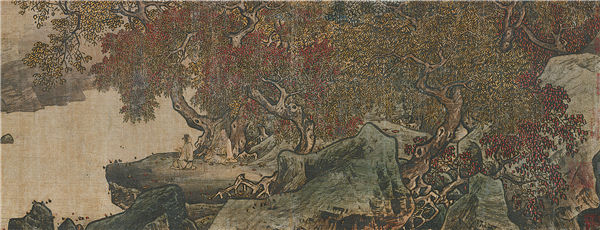

One of the major changes they made was a shift from the panoramic-view structure, common in the Northern Song era, to a partial-focus layout. This approach is especially noticeable in the works of Ma and Xia, and is often referred to as the "Ma-Xia school". They favored the technique of depicting their subjects — mountains, rivers, men and animals — in only a half of the composition, so much that they gained nicknames, "one-corner Ma" and "one-side Xia".
It is said that the treatment could be a metaphor for the territory of the Northern Song Dynasty which was later occupied by the Jurchen founders of the Jin Dynasty (1115-1234), forcing the Song court to establish the Southern Song in Hangzhou, then called Lin'an. Regardless, the unique structure achieved aesthetic recognition for the use of white space that accentuates a contrast between the substance and void.
Xu Jiang, vice-president of the China Artists Association and former dean of the China Academy of Art, says he is greatly awed by A Scroll of Landscapes of Four Seasons, by Liu Songnian, in which Liu depicts the natural scenery and the leisurely, recreational lifestyle led by the dignitaries in Lin'an.
"Liu was born in Hangzhou, and used to live near the Qingbomen gate, which was close to the West Lake. His works remind me of a saying that goes, 'the West Lake links the worlds of people and celestial beings'," he notes, adding that what people see and feel in those paintings is not only the height of Chinese culture during the Song era, but also the spiritual pursuit of an enriched, carefree state in the embrace of nature, which is something that was, and remains, essential to the mentality of the Chinese people.
